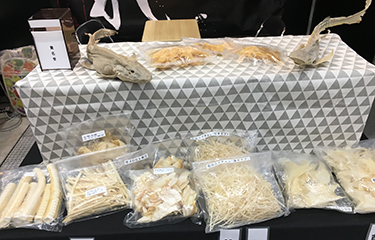At the 18th Conference of the Parties in Geneva, the 183 parties of the Convention on International Trade in Endangered Species of Wild Fauna and Flora (CITES) added 18 species of sharks and rays to the threatened list, “Appendix II.”
As a result of the new listings, international trade in shortfin mako shark, longfin mako shark, 10 species of wedgefish, and six species of giant guitarfish will be banned unless they are proven to be legal and sustainable. The inclusion of these 18 species in Appendix II increases the number of commercially important shark and ray species regulated by CITES to 38.
CITES, also referred to as the “Washington Convention,” is a multilateral treaty to protect endangered plants and animals. Appendices I, II, and III to the convention are lists of species afforded different levels of protection from over-exploitation, with Appendix I being the most endangered and Appendix III being a species traded by one of the parties, in which that party asks other CITES members to assist in the regulation of trade.
Silky sharks, thresher sharks, and devil rays were added to CITES Appendix II at the previous Conference of the Parties (CoP17, Johannesburg) in 2016. Shark species and sawfishes – which belong to the same sub-class as sharks – that were included in CITES Appendices before CoP17 are basking shark, whale shark, great white shark, sawfishes, oceanic whitetip shark, scalloped hammerhead shark, great hammerhead shark, smooth hammerhead shark, and manta rays.
China and Japan, countries where shark fin soup is popular, were among those opposing increased protection passed in Geneva, saying it wasn't clear fishing was behind the decline in shark numbers.
The reduction in shark numbers is partially due to finning, the practice of cutting off the valuable fins and discarding the rest of the body. There is a reason for such waste – shark cells contain urea which decomposes to foul-smelling and toxic ammonia quickly after death, making quick processing important.
Where shark is a bycatch on a busy fishing vessel, time cannot always be devoted to such quick processing. Some research is being devoted to processing methods to reduce urea content of sharks, by washing or steaming.
In Japan, shark meat is also consumed in the form of a fluffy kamaboko fishcake called “hanpen.” The city of Kessenuma is the center of Japan’s shark processing industry. Shortfin mako sharks and blue sharks are typically used.
Mako sharks have now been added to Appendix II, so the export of products using mako shark would be prohibited unless the local fishing can be shown to be sustainable. Blue shark is not endangered.
The industry has also been well developed in Indonesia. Kobe, Japan-based Nihon Novelica recently displayed shark products it imported from its Indonesian subsidiary at the 21st Japan International Seafood and Technology Expo.
“Everything is used. The meat is sold and the skin is made into leather,” said a Nihon Novelica staff member, Ms. Murakami, at the expo. The company’s website advertises fin from tiger shark, sandbar shark, milk shark, blue shark, and others.
Another cause of shark mortality is entanglement in tuna nets and FADs (fish aggregating devices). Tuna have a habit of congregating under any floating object. They often gather near whale sharks, the world’s largest fish. Fishermen will sometimes set nets around a whale shark to catch any tuna that may be gathering around it, catching the whale shark in the process.
Sharks can become entangled in the netting used in some FADs as well, with silky sharks being especially prone to such entanglement. Since some shark species must keep moving to force water across their gills, stopping their movement prevents them from breathing.
In February 2019, the Western and Central Pacific Fisheries Commission (WCPFC), a regional fisheries management organization, discussed a Draft CMM [Conservation and Management Measures] for Sharks based on the FAO International Plan of Action for the Conservation and Management of Sharks (IPOA).
The suggested measures included a requirement for full utilization of sharks; a requirement that fins should be no more than 5 percent of the weight of sharks on board; and a requirement that member countries require their vessels to land sharks with fins attached, or to take measures to match the fins with the corresponding carcass by bagging together, attaching with a rope or wire, or using corresponding tags.
Longline vessels would be prohibited from using wire branch lines, and from running branch lines directly off the longline floats (known as “shark lines”). Whitetip and silky sharks are to be released. Purse seiners are not to set nets on a whale shark, if it is sighted before setting the net. Any whale sharks caught are not to be retained and should be released alive if safely possible.
Separately from this CMM, steps to reduce bycatch by use of non-entangling FADs were proposed at a 10 to 14 December WCPFC meeting in Honolulu. They included that from January 2020, the hanging “tail” of FADs used in the WCPFC area should be a single weighted panel of solid material like canvas or nylon or net with mesh size smaller than 7 centimeters (2.5 inches), or net with mesh smaller than 7 cm tied into the shape of sausages.
Photo by Chris Loew/SeafoodSource.







